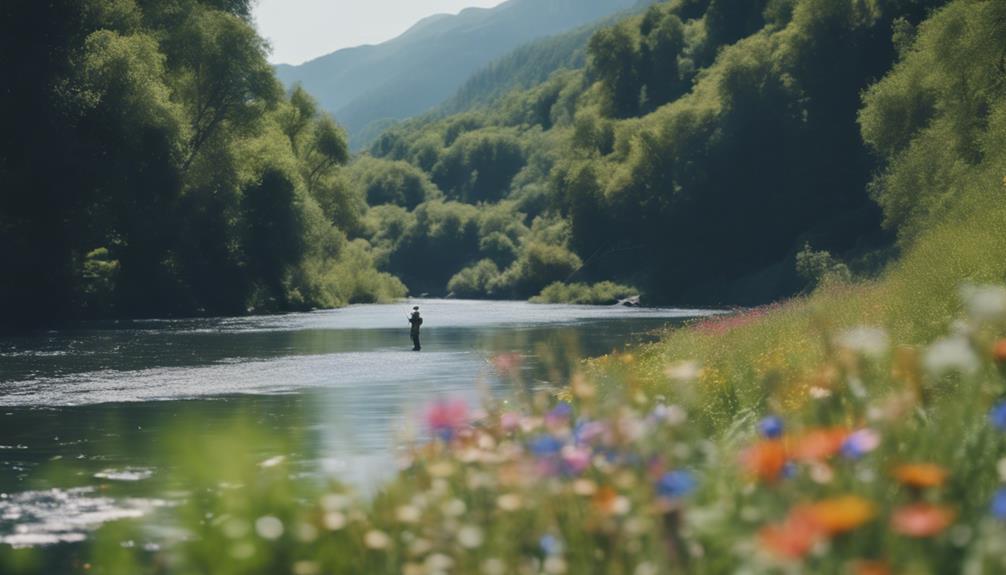Fly fishing is an enchanting sport that combines skill, patience, and a deep appreciation for nature. If you’re looking to immerse yourself in the art of angling, you might be wondering how to fish fly fish. This guide will provide you with everything you need to know to get started, from understanding the basics to mastering the techniques that will make you a successful fly fisher.
Understanding the Basics of Fly Fishing
Before diving into the specifics of how to fish fly fish, it’s essential to grasp the fundamental differences between fly fishing and traditional fishing. In fly fishing, the angler uses a lightweight lure called a fly, which is designed to mimic insects or other food sources that fish feed on. Unlike conventional fishing, where the weight of the bait casts the line, fly fishing relies on the weight of the line to cast the lightweight fly. Understanding these basics will set the stage for your fly fishing journey.
Choosing the Right Gear for Fly Fishing
One of the most critical steps in learning how to fish fly fish is selecting the right equipment. Essential gear includes a fly rod, fly reel, backing line, fly line, and leader line. For beginners, a 9-foot, 5-weight rod is a versatile option suitable for various fishing environments. When selecting a reel, ensure it balances well with your rod and is capable of holding your fly line and backing. Additionally, choose flies that mimic the local aquatic insects and fish species in your area, as this will significantly increase your chances of catching fish.
Mastering the Casting Techniques
Casting is a crucial skill in fly fishing, and mastering it is essential for success. The basic fly cast involves several steps: the backcast, forward cast, and delivery. Start by holding the rod at a 10 o’clock position during your backcast, then smoothly transition to a forward cast at around 1 o’clock. Practice your timing and wrist movement to ensure a clean and efficient cast. Once you’re comfortable with the basic cast, consider learning advanced techniques like roll casting or double-hauling for greater distance and accuracy.
Understanding Fish Behavior and Habitat
To effectively learn how to fish fly fish, you must understand fish behavior and their habitats. Different species of fish inhabit various environments, such as rivers, lakes, and streams. Factors like water temperature, weather conditions, and time of day can significantly impact fish activity. For instance, many fish are more active during dawn and dusk when insects are abundant. Familiarize yourself with the local fishing regulations and the types of fish available in your area, as this knowledge will inform your fishing strategy.
Choosing the Right Flies for Your Target Species
Selecting the right flies is vital for successful fly fishing. The type of fly you choose will depend on the species of fish you are targeting, the season, and the local insect life. Common types of flies include dry flies, nymphs, and streamers. Dry flies float on the water’s surface, attracting fish that are feeding on insects, while nymphs imitate the underwater stages of insects. Streamers mimic small fish or aquatic creatures and are effective for predatory species. Research local hatches and seek advice from experienced anglers to determine the best flies for your fishing conditions.
Techniques for Catching Fish While Fly Fishing
Once you’re on the water, employing effective techniques can enhance your chances of landing a fish. First, focus on your presentation. The goal is to present the fly in a manner that appears natural to the fish. This may involve varying your retrieve speed or using techniques like “mending” to manage your line on the water’s surface. Additionally, pay attention to the strike: when you feel a tug, resist the urge to immediately set the hook. Instead, wait a moment to ensure the fish has fully taken the fly before making a decisive hook set.
Practicing Catch and Release Ethics
As you learn how to fish fly fish, it’s crucial to adopt a conservation mindset. Catch and release practices help sustain fish populations and protect aquatic ecosystems. When handling fish, wet your hands to minimize damage to their protective slime coating and use barbless hooks when possible for easier release. If you plan to keep some fish for consumption, be aware of local regulations regarding size and bag limits. By practicing ethical fishing, you contribute to the preservation of the sport and the environment.
Continuing Your Fly Fishing Education
Fly fishing is a lifelong journey of learning and improvement. As you gain experience, consider joining local fly fishing clubs, attending workshops, or even hiring a guide to enhance your skills. Online resources, books, and instructional videos can also provide valuable insights. Engaging with the fly fishing community allows you to share experiences, learn new techniques, and stay updated on the latest gear and strategies. Remember, every fishing trip is an opportunity to learn, so embrace the process and enjoy every moment spent on the water.
Conclusion: Embrace the Adventure of Fly Fishing
Learning how to fish fly fish can be an incredibly rewarding experience, connecting you to nature and providing countless memorable moments. With the right gear, techniques, and knowledge of fish behavior, you’ll be well on your way to becoming a proficient fly fisherman. Whether you’re casting in serene rivers or serene lakes, the tranquility and excitement of fly fishing will keep you coming back for more. So grab your rod, choose your flies, and embark on this fantastic adventure today!
